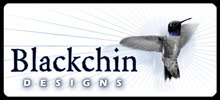 A former resident of the unlovely Salton Sea.
A former resident of the unlovely Salton Sea.The Salton Sea is justly known as a paradise for birders: if you can spend several days doing nothing but thinking about and looking for birds, a trip there will make you a very happy camper.
But if you want to do anything else there (apart from hunting, off-road vehicle racing, or producing large quantities of meth undisturbed), you're screwed: finding anything else pleasurable to do there is an exercise in futility. Take, for example, eating.
We stayed at the
Calipatria Inn, a surprisingly comfortable place in the town of Calipatria, one of the rare settlements too tiny to have as much as a McDonald's or Starbucks. (But it did have a state prison whose surrounding grounds are supposed to be a good birding spot.) The only eateries around (the nearest neighboring towns were about 10 miles away) were a tiny Mexican place that always seemed to be closed and the hotel's own, uh, "Steakhouse". Due to sheer sloth (after birding 10 hours straight, we didn't feel like driving long distances for identifiable foodstuffs), this is where we had dinner three nights in a row.
Since Glenn wanted to take advantage of every moment of daylight for photography, and I wanted to find as many birds as I could, we decided to skip lunch every day (instead snacking on granola bars while on the hoof) and eat insanely early dinners. And after 10 straight hours of stalking burrowing owls, just about anything tasted good: the serviceable little tossed salads that preceded our grilled mystery meat entrees seemed like ambrosia.
On our first night, I ordered a glass of wine with my dinner. It was presented in clean stemware, chilled to a brisk 40 degrees.
It was a Merlot.
The second night, I ordered another Merlot. Also nicely chilled.
By the third night, I was perversely looking forward to a nice cold glass of red wine.
And I needed it, too. The dining room had a captive audience; just about all the guests at the hotel had their dinner there. Unfortunately, our trip coincided with the height of hunting season, and the tiny dining room was filled with loud guys in camouflage. As an omnivore, I'm not against taking animals for food, but there's something about killing just for fun—and the guys who do it—that rubs me the wrong way. Being barraged with conversations that would make Rush Limbaugh sound liberal sent me further into the cold comfort of bad Merlot.
That, and their presence made it nearly impossible to get a close-up look at any waterfowl in the area: ducks that would calmly stare you in the eye at Bolsa Chica would flee at the mere suspicion of human presence. Who could blame them?
The other challenge for Salton Sea visitors is navigating the area. The roads along the eastern shore, where most of the birding spots are, appear to be ordinary straight country roads, laid out in a well-behaved grid pattern and framed by endless vistas of grass fields, cattle pens, and hay bales.
But looks can be deceiving: ordinary two-lane asphalt roads would suddenly turn into unpaved ruts running through farmland, then turn into paved roads again a mile later, just when we'd convinced ourselves that we'd made a wrong turn. Seemingly straight roads would twist abruptly and double up on themselves in weird ways. And, as mentioned in my last post, there don't seem to be any detailed maps of the area. Both Mapquest and Glenn's GPS unit, on various occasions, seemed to throw up their virtual hands at our queries: I tried to download Mapquest directions to the hotel before setting off, and the last direction was "Consult local maps for further directions." WHAT local maps??
For an area that covers so much space—the Salton Sea is about 40 miles long—there are relatively few people, so during our stay we got to recognize several of the other birders and photographers in the area. One of these was a photographer who came up to us and introduced himself during our last dinner: "Keep seeing you around—it's time for an introduction," he said.
He turned out to be a landscape photographer, also from Orange County and also visiting Salton Sea for the first time. After dinner, he and Glenn opened their laptops and compared their day's shooting. Even more entertaining than his well-crafted photography was the conversation about the head-scratching weirdness of the place.
"Did either of you have the carne asada in the restaurant?" he asked.
"Yes."
"And did you ever have the tri-tip?"
"Yes."
"Did you notice that they're
exactly the same thing?"
We exchanged horror stories about navigating the strangely-laid-out roads: he had come upon a four-way intersection where only one of the four directions had a stop sign. We had come upon a four-way intersection whose two streets—according the to primitive map inside one of the local birding brochures—were supposed to run
parallel to each other.
But at the end of an evening of lighthearted complaining, one thing was sure: we'd all come back again, in a heartbeat.
 Worth the detour: A pair of Gambel's Quail.
Worth the detour: A pair of Gambel's Quail.



















